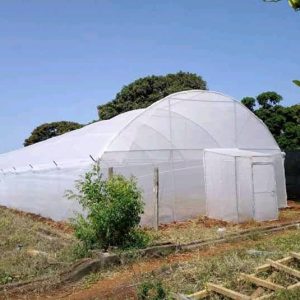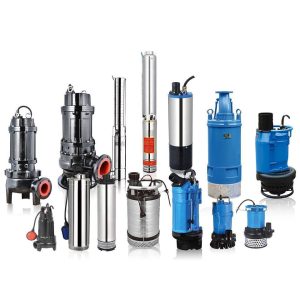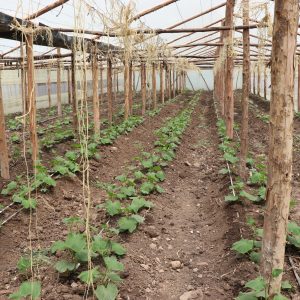Overhead Sprinkler Irrigation
Get overhead irrigation design and Overhead Sprinkler Irrigation from Aqua Hub Kenya with the following features:
- Rain guns (1″, 1.5″, 2″ & Flange)
- High-Pressure Impact Sprinklers (3/4″ & 1″)
- Pop up sprinklers
- Low Pressure (Butterfly & Ground/Grass Sprinklers)
Overhead sprinkler irrigation
One of the most common irrigation systems is overhead sprinkler irrigation. As the year’s pass, there is a growing concern about going green all over the world.
The overhead sprinkler irrigation system is perhaps the best strategy for appropriately focusing on plants.
What is overhead sprinkler irrigation?
You’ve probably seen how evenly water droplets are distributed when it rains. This is done for all the crops that have been planted in a solitary field. The plants seem to reawaken because of getting a sufficient measure of water after every precipitation. The overhead sprinkler water system framework was made by mechanically creative experts who were inspired by the method of natural rainfall.
Sprinkler irrigation, like rainfall, is a framework that permits water appropriation through an organization of lines. Water is siphoned through the lines and sprinkled high up with the assistance of sprinklers. The water is then converted into small droplets, similar to rain, and falls on crops in a field.
It’s a technique for applying irrigation water that mimics natural rainfall.
What are the benefits of Sprinkler irrigation?
There are times when a sprinkler framework offers a bigger number of advantages than different kinds of water systems. Coming up next are the fundamental advantages of utilizing a Sprinkler Irrigation System:
- It is both cheap and easy to set up. You will not need to burn through huge amount of cash on work to set it up.
- There’s compelling reason need to utilize an enormous piece of your field to set up sprinkler water system.
- There is almost no obstruction with development while introducing sprinkler water system. Accordingly, you won’t experience a huge misfortune.
- Water can be applied to the plants consistently, and you will not need to do it without anyone else’s help.
- The dispersion of water will be equivalent all the time.
What type of crops is good for overhead irrigation systems?
Sprinkler irrigation system is reasonable for most line, field, and tree yields, and water can be showered over or under the harvest overhang. Enormous sprinklers, on the other hand, are not suggested for the watering of fragile crops like lettuce since the large water droplets may harm the plant.
What are the categories of overhead irrigation?
A sprinkler irrigation system can be classified into three categories:
- Permanent overhead system
- Semi-permanent overhead system
- Portable overhead system
What is the application rate of overhead irrigation?
This is the typical rate at which water is sprinkled onto crops, estimated in millimetres each hour. The pace of not set in stone by the size of the sprinkler spouts, the working strain, and the distance between the sprinklers.
What are the components of an overhead irrigation System?
The following are the components of a typical sprinkler irrigation system:
| Component | Description |
| a) Pumping unit | The pump that takes water from the source is usually a centrifugal pump. It ensures that the pressure in the pipe system is sufficient. |
| b) Mainlines and, on occasion, submainlines | These are the pipes that carry water from the pump to the laterals. |
| c) Laterals | Deliver water to sprinklers from mainlines or submainlines |
| d) Sprinklers | It is the part that spray water to the plants. |
What are the factors to consider before implementing overhead irrigation?
| 1. Crop. | 2. the initial outlay |
| 3. Cost and availability of energy | 4. The size and shape of the field. |
| 5. requirements for labor | 6. The source of water |
Aqua Hub Kenya sells high-quality overhead sprinkler irrigation systems in a variety of sizes at affordable prices. For more information, please contact us at: 0790719020 NAIROBI | Get Quote ELDORET
Related products
Drip Irrigation
- Tank Connection,Main Pipes & Fittings,Sub Main & Fittings,Drip Lines & Fittings,Filtration System, Installation, Training & Commissioning
- Agronomic Support
- Distribution of drip lines per bed according to crop
- 1/8 - 500 sq. m
- 1/4 - 1000 sq. m
- 1/2 - 2050 sq. m
- 1 Acre - 4096 sq. m
Greenhouse Polythene
Plastic Impact Sprinklers
Pop Up Sprinklers
For more details, Call :NAIROBI: 0790719020 | ELDORET: Get Quote
PVC Tee Connectors
Specifications of PVC Tee Connectors
- Plastic Polyvinylchloride materials
- Grey body colors with a smooth surface.
- Comes in diameter sizes of 20, 32, 40,50,63,75,90 and 110mm.
- Working pressure of PN10 to PN16
Features of PVC Tee Connector
- High tensile Strength
- PVC soft non-abrasive inner and outer surface
- Versatile application
- Connects to variety of PVC pipes and Fittings
- Can be available in wide range of sizes
- Durable
- Applicable in a versatile range of uses.
Price of PVC Connector
The cost of our PVC tee connectors can be as low as KES 200 to KES 5,000 depending on the sizes. Call: +254790719020Sprinklers & Rain Guns
- Rain Guns
- Flange Rain Guns
- Impact Sprinklers
- Butter fly / Ground Sprinklers
- Pop Up Sprinklers
- Gravity Sprinklers
Water Pumps
Wooden Greenhouse
- Wooden Structure
- Water Tank (*Excluding the water tank tower)
- Polythene Sheeting
- Insect Netting
- Drip Irrigation Kit
- Main Pipe & Fittings
- Tank Connection
- Filtration Unit
- Crop support
- Entry pouch
- Soil testing
- 8M by 9M
- 8M by 15M
- 8M by 20M
- 8M by 24M
- 8M by 30M






















